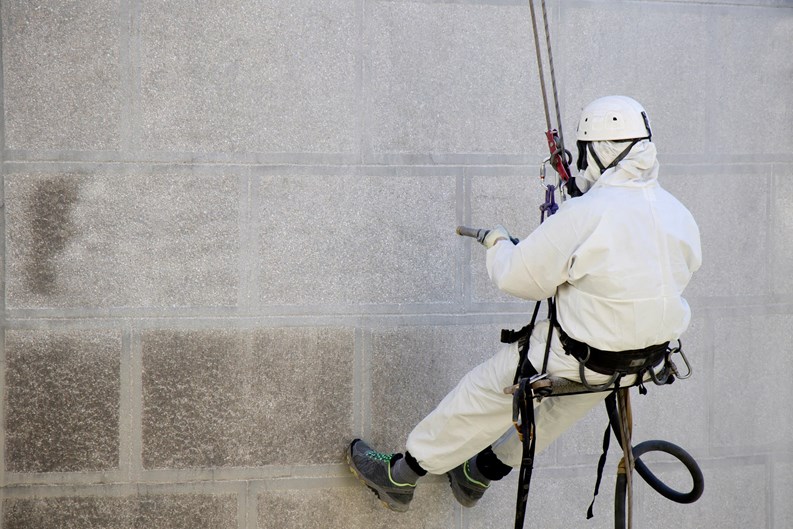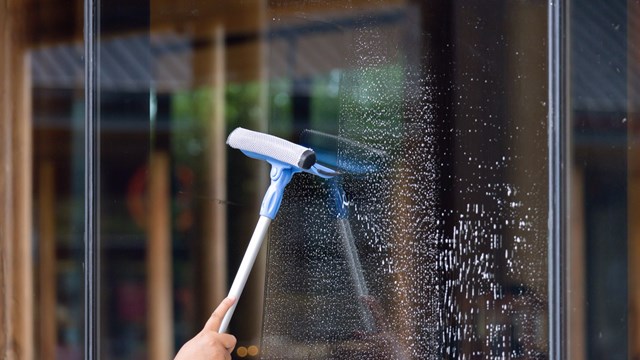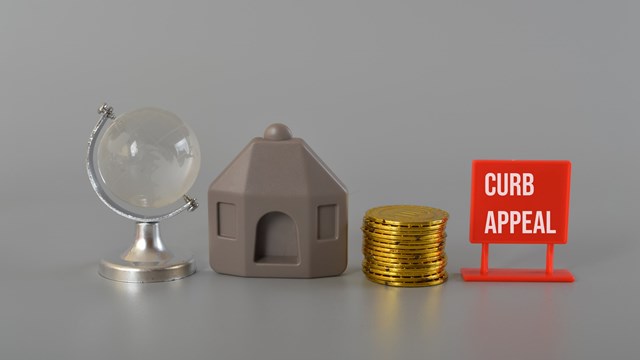For most people, their home represents their single biggest investment. And in a multifamily building or homeowners association, both individual units and the entirety of the building or development are part of that investment. In light of that reality, it’s not enough to ensure that everything is operational, though that is of course hugely important; it’s also vital to consider the appearance of buildings, grounds, and other exterior elements.
In this regard, cleanliness is indeed akin to godliness, especially when it comes to the exterior of the property. After all, a building or association’s public face is the first thing that’s going to catch the eye of a would-be buyer. As such, boards and management must be diligent, take regular stock of their surroundings, and plan as best they can for the unexpected—especially where inclement weather is concerned.
Routine Maintenance is Key
Having a set schedule for walking the property and taking note of anything that looks askew is the easiest way to avoid more complicated—and ultimately costly—clean-up and repair jobs.
“Regularly scheduled exterior maintenance is important, and it is helpful to have a staff dedicated to that maintenance, when possible,” says Mark Anker, President of Anker Management in Hartsdale, New York. “Staff that is able to identify potential issues will assist in the proper maintenance of a property. Having a schedule or time frame to inspect the envelope of a building is important as well, as it creates a routine and helps the staff by reminding them to take a look at specific areas. Roofs, windows, caulking, pointing, painting... all of these areas should be inspected and properly maintained.
“Associations should avoid allowing ivy to grow on the bricks of buildings,” Anker continues. “Although it may look pretty, it can severely damage the masonry of the property. And allowing dirt to build up on the facade can conceal underlying issues, such as weak or missing mortar joints, which will allow water infiltration. A freeze-then-thaw pattern will cause bricks to pop, leading to yet more damage.”
And above and aside from the structural risks, “a dirty building also decreases the curb appeal of a property,” Anker warns. “You only get one chance to make a first impression, so make it a clean one. Third-party vendors and/or staff can use pressure washers to clean the exterior, along with mild detergents. In some areas, graffiti is a concern, the removal of which requires expertise beyond what most building staff members are trained to handle.
“Today, most buildings are looking toward greener cleaning solutions, which are significantly less caustic than products used in the past,” he further adds. “In the event that a board decides to hire a professional, it must verify that the contractor is properly licensed and insured for use of scaffolds, in the event that they are needed.”
Manage That Maintenance
While even the most capable manager cannot handle the entirety of an association’s exterior maintenance on their own, he or she can certainly act as the conduit through which all activity flows.
“A maintenance routine varies depending on whether you’re a site manager, a regional manager or portfolio manager,” says Sean Jordan, a director of property management with FirstService Residential in Newton Upper Falls, Massachusetts. “Normally, you would have daily, weekly, monthly, quarterly, semi-annual and annual calendars that you would use to track schedules, and one recurring item throughout would be cleaning. For a site manager, the expectation should be that they’re out walking the property at least once per day, checking to see if anything looks different from the day prior that could be related to refuse. In Boston, this could mean graffiti tagging, or putting gum or stickers on walls, etc. It’s similar for a portfolio manager, but they’re just not at the property on a daily basis – and regional managers will be surveying the property quarterly or monthly, depending on how their organization works. When I was a site manager, I’d personally walk the property in the morning, and then again at the end of the day.”
Jordan, too, mentions exterior power washing as a means to get rid of those especially pesky stains. “For properties that have vinyl siding, I’d recommend doing this in the springtime, and when entering the fall as well, if necessary” he says. “Proactively painting in areas that are inclined to have more moss build-up is a good idea; you’re going to spend more man power checking for algae and moss to see that those are not embedding themselves in the wood and causing issues” than would be spent simply putting a few coats of paint on the surface in question to discourage moss growth in the first place.
Major storms can bring major exterior messes as well. “If there’s a really bad rain storm, you get a lot of debris that washes down,” Jordan explains. “If you have a grate on the property, and the leaves semi-embed themselves, you will have to go out and scrape them off. You also want to go out and proactively pick up any broken branches or other debris where people may be walking to spare them any trip hazards.”
When it comes time to hire a third-party vendor to deal with a bigger or more complicated clean-up job, a board needs to make an informed decision. “We always ask boards how they feel about the vendors they’d used up to that point,” Jordan notes. “Are these vendors meeting expectations? Or did they start strong, and then fall off? If the latter, that could be because a new employee has been charged with your association. We have cleaners with whom we like to work at our properties who’ve been proven and vetted. Some companies specialize in different materials and designs so you can assess things case-by-case, or you might evaluate based on the chemicals they use and decide if that’s right for your property.”
Better Living Through Chemistry
It may seem like a minor detail, but various chemicals can have different effects on different properties depending on the building materials used, and some products are just more toxic for the greater environment than the greener alternatives on the market. Boards and management should weigh these variables when purchasing firsthand or contracting with a vendor.
“In recent times there have been advances in chemical products that can remove dirt and mold from older masonry facades and avoid doing any damage,” says Janet Nelson, a retired portfolio manager with FirstService Residential in Chicago. “This greatly improves the curb appeal of the building, and brings back the original elegance of some of the older, classic designs. Many of those have ornate facades, so cleaning and restoration can be a delicate process. However, as newer chemicals have developed, the extreme pressure and force of power washing can be reduced, and ornamental buildings can be cleaned up and regain their original grandeur.”
There are three main methods used in the building envelope industry for cleaning façades,” says Marcello Tronci, Senior Structural Engineer and NY Office Director at CTLGroup, an architectural and engineering firm with offices in New York and Chicago, “water treatments, chemical treatments, and abrasive treatments. Their application varies in many aspects depending on what type of material the building envelope is made of.”
Tronci explains that “the most common water-based cleaning method by far is pressure washing, in which a low- to medium-pressure spray (100 to 400 psi) is applied to the surface of the building. Chemical cleaners,” he continues, “may be sprayed or brushed on a wet surface and then rinsed off with water after completion. Before water is applied, these chemical components need to sit on the surface for a certain period of time, depending on their composition and the material or dirt being removed. In general, we don’t recommend abrasive treatments like grinding, sanding, and blasting. The risk associated with removal of the base material particles along with dirt and paint is substantial, and therefore considered potentially damaging to the façade.”
Reggie Thomas, director of community management for Evergreen Management Group located in Newton, Massachusetts, notes that “It’s always best to use cleaning products and methods that are surface-specific for different buildings. For softer stone types, you want to use a low-pressure, green-friendly product that will lift the dirt and staining out of the surface, then pressure washers as a rinsing tool. Brick and stone buildings are very porous, so the right product helps open up those pores. When we have a question, we consult with our vendors and manufacturing reps regarding the best method to use for specific surface types. Vendors provide test samples prior to applying their product, to ensure there are no bad outcomes. There’s no one-size-fits-all when cleaning buildings; brick, granite, and concrete can handle more pressure, but product knowledge is always key to maximizing results.”
Dan LeBlanc, Regional Director at FirstService Residential in Canton, Massachusetts, points out that when chemical cleaning is called for, using a qualified expert is critically important. “It’s tough,” he says. “You can’t just send a maintenance guy to take off graffiti and mildew. You’re using chemicals—and if you don’t use the right ones, you can discolor the brick or stone. Normally, we handle this on a case-by-case basis. If the damage is from graffiti, we bring in an expert to remove it properly. In historical preservation areas like Back Bay in Boston, we have to be particularly careful due to the requirements under historical preservation provisions.”
A Clean Finish
Just as buildings and associations take care to keep their interior spaces clean, sanitary, and visually appealing, it’s important to pay equal attention to exterior surfaces as well—not just for the sake of curb appeal, but also to get the most useful life out of building materials and finishes. A regular inspection and cleaning routine, working with reputable, knowledgeable professionals, and using the right products and methods are all key to an attractive, well-maintained property.
Cooper Smith is a staff writer/reporter with CooperatorNews.










Leave a Comment